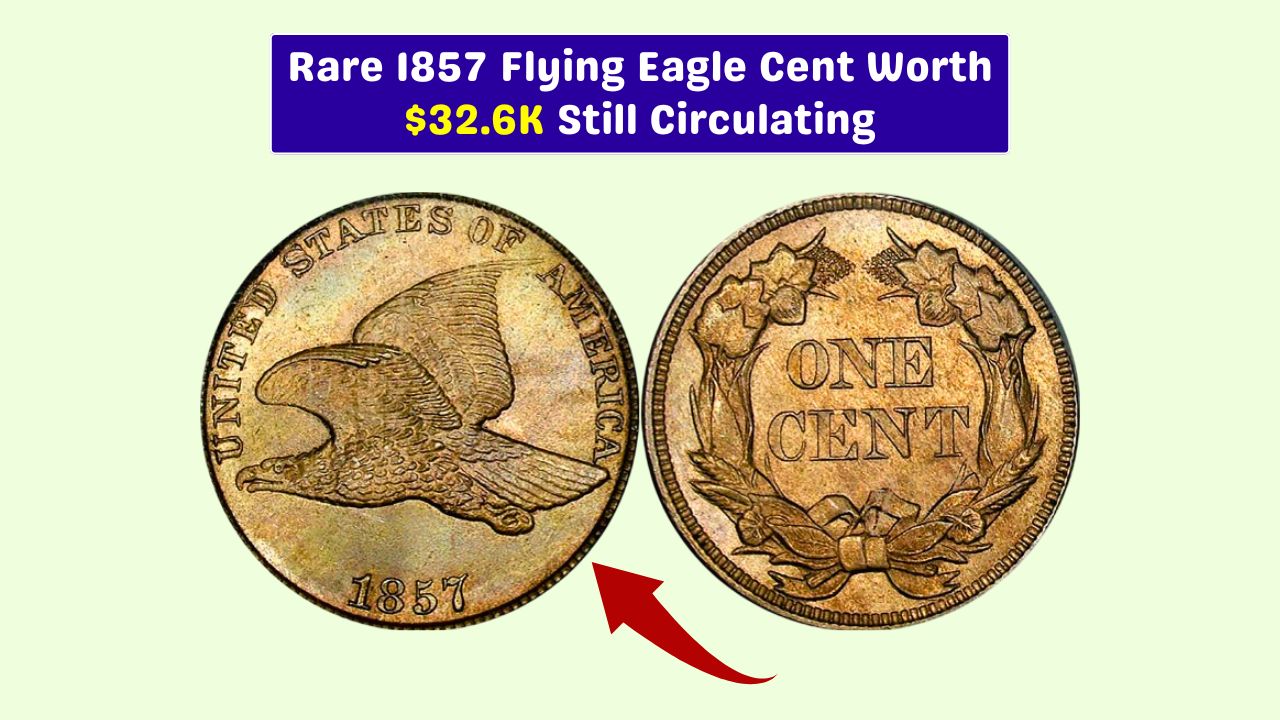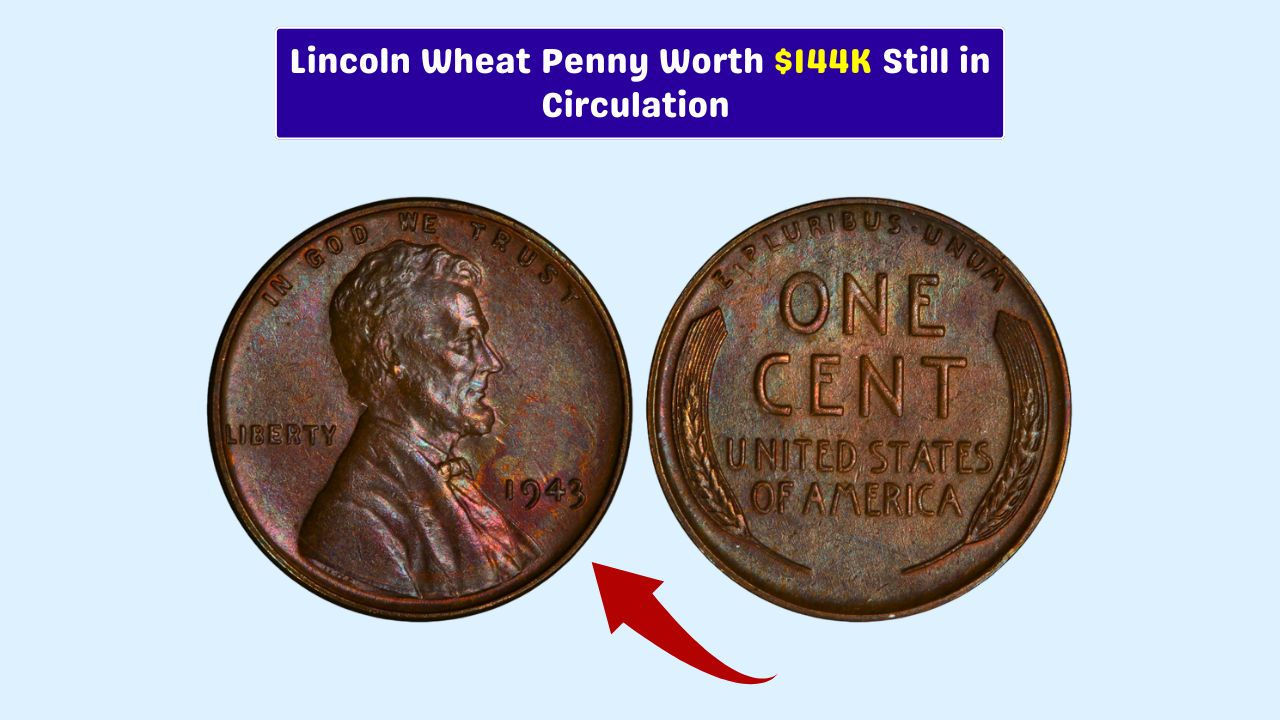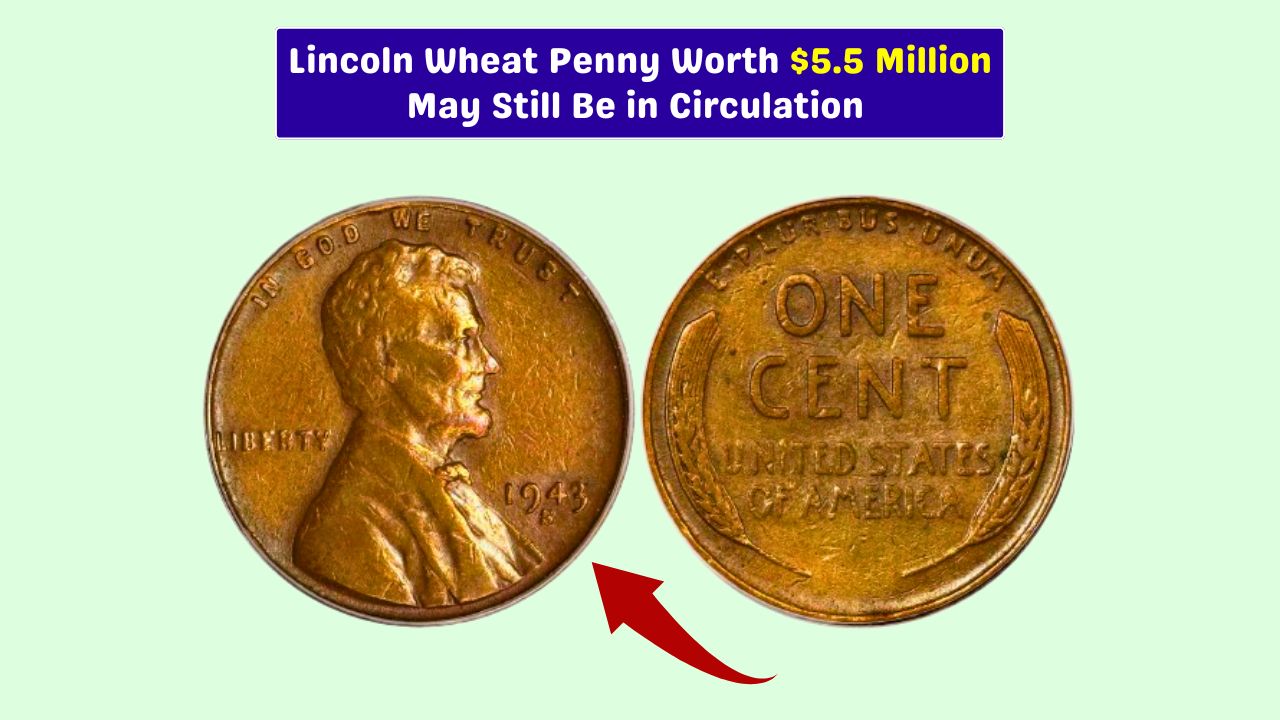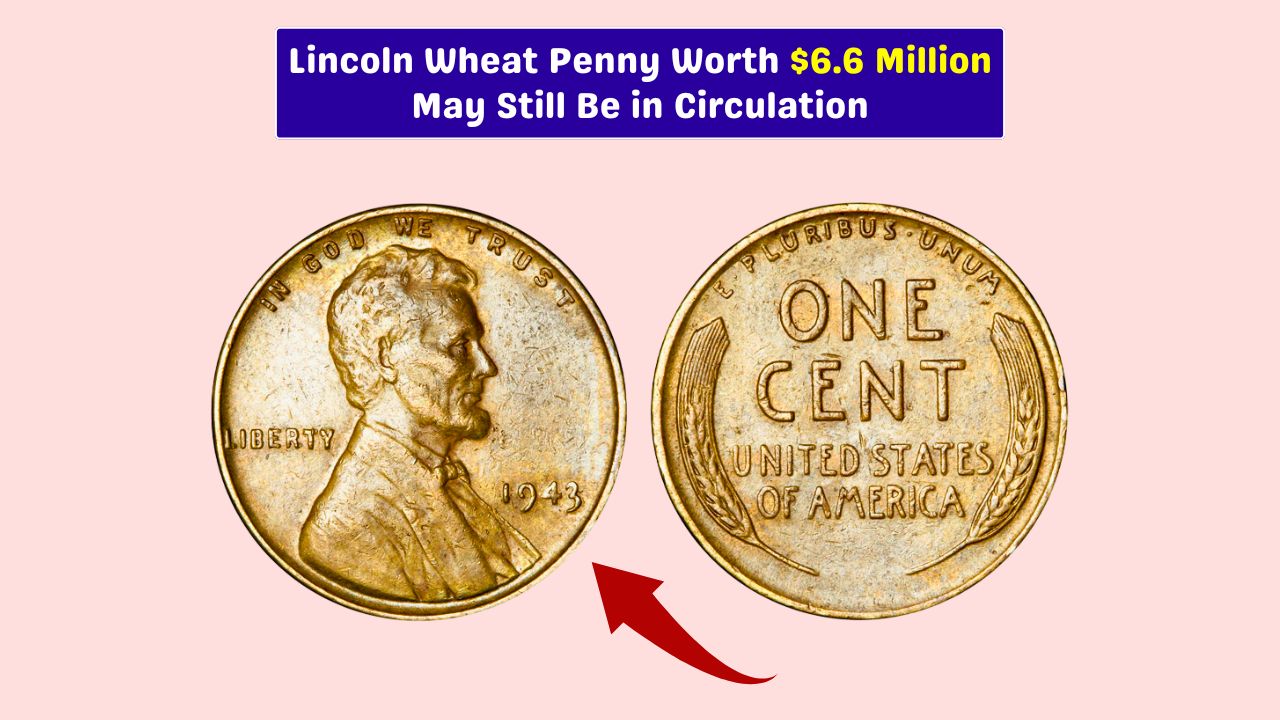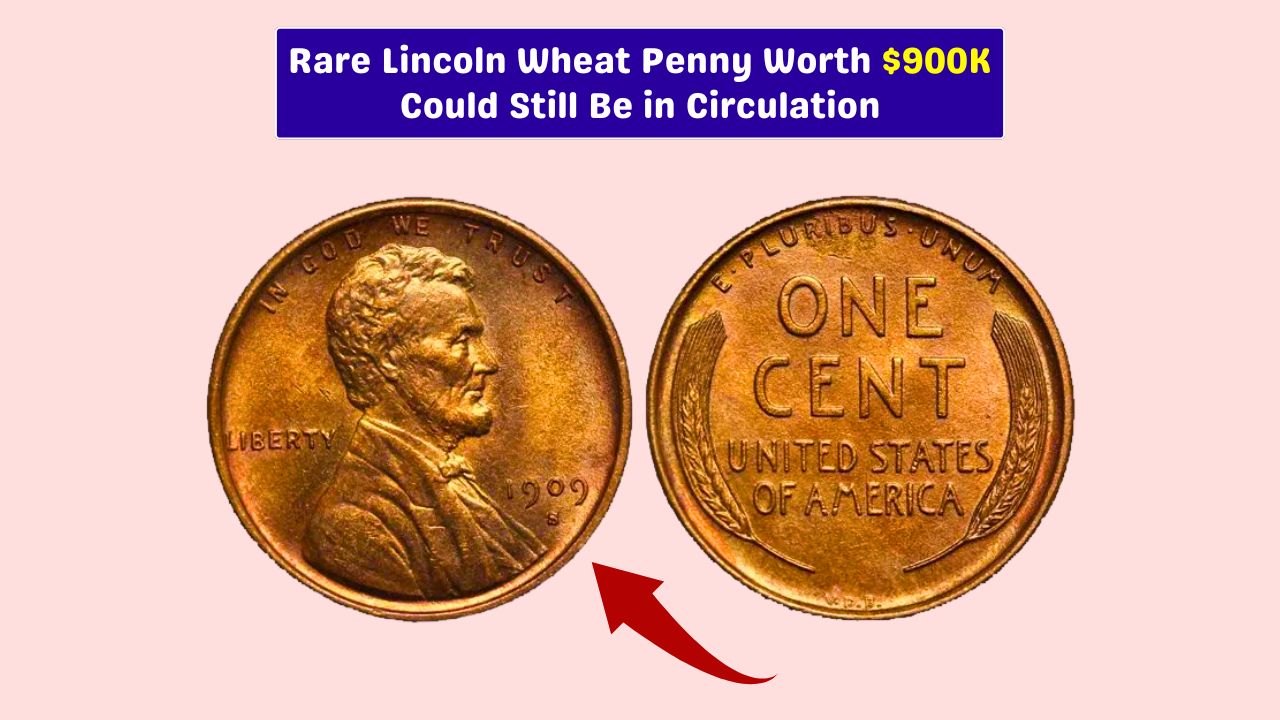Ever imagine a tiny coin could be worth more than a car? That’s the case with the 1857 Flying Eagle Cent graded PCGS Proof-65. Valued at a stunning $32,625, this rare U.S. coin is a collector’s dream thanks to its low mintage, sharp design, and pristine condition.
Let’s take a closer look at why this little cent is worth so much and what makes it one of the most fascinating coins in American history.
Origin
The Flying Eagle cent first took flight in 1856 as a test run. But it wasn’t until 1857 that the U.S. Mint officially released it to the public. It replaced the larger, heavier cent, making it the first “small cent” in American coinage.
Made from 88% copper and 12% nickel, it had a unique pale look that set it apart from earlier coins.
On the front of the coin, or the obverse, is a bold design of an eagle in mid-flight, created by Chief Engraver James B. Longacre.
Flip the coin, and you’ll see a neat wreath made of crops—a symbol of national prosperity. The coin quickly became popular, but it was only made for two years, making it a short-lived but memorable part of numismatic history.
Grading
So, what does PCGS Proof-65 even mean? PCGS stands for Professional Coin Grading Service, one of the most trusted names in coin grading. “Proof” coins are specially made for collectors using polished dies and planchets. They’re struck more than once, which brings out all the fine details.
A grade of Proof-65 means the coin is in nearly perfect condition. It has great visual appeal and only a few tiny flaws that are hard to see without magnification.
These Proof coins weren’t made for spending, so finding one in this high grade today is incredibly rare.
Coin Snapshot
| Feature | Details |
|---|---|
| Coin Name | 1857 Flying Eagle Cent |
| Composition | 88% Copper, 12% Nickel |
| Grading | PCGS Proof-65 |
| Sold Price | $32,625 |
| Mintage (Proof) | 50–75 estimated |
| Designer | James B. Longacre |
Value
There are a few key reasons why this coin is so valuable. First, it’s rare—only around 50 to 75 Proof versions were made in 1857. That’s an incredibly small number.
Second, it marks an important moment in American coin history: the shift from large cents to the smaller, modern format we still use today.
Then there’s the condition. Most coins from the 1800s are worn, damaged, or altered. But a Proof-65 grade means this one has survived the years in excellent shape.
Add in the fact that it’s a stunning design, and it’s no wonder collectors are willing to spend tens of thousands of dollars.
Auctions
This particular Flying Eagle cent sold for $32,625 at auction, but that’s not even the ceiling. Some have sold for more depending on factors like visual contrast, toning, and the style of the PCGS holder it’s stored in.
Coins with a “cameo” look—where the design pops against a mirrored background—tend to sell for more.
Collecting
Thinking of collecting one? Here’s what to keep in mind:
- Always buy coins that are certified by trusted graders like PCGS or NGC.
- Avoid coins that look too shiny—they might have been cleaned, which hurts value.
- Monitor market trends; rare coin prices can shift with demand.
- Stick to reliable dealers or major auctions for purchases.
The 1857 Flying Eagle Cent in PCGS Proof-65 condition is a masterpiece in miniature. With its sharp design, historic role, and ultra-low mintage, it’s not just another old coin—it’s a symbol of change, craftsmanship, and collectible value.
Whether you’re a lifelong collector or just learning the ropes, this coin is proof (pun intended) that some things truly do get better with age.
FAQs
What is a Flying Eagle cent?
A small U.S. cent first minted in 1856–1857 with an eagle design.
Why is the 1857 version rare?
Only 50–75 Proof coins were made, making it extremely limited.
What does Proof-65 mean?
It’s a high grade showing minor flaws and excellent visual quality.
How much did it sell for?
One sold in 2025 for $32,625 at a public auction.
Can I buy one today?
Yes, through certified dealers or auctions, if you have the budget.

